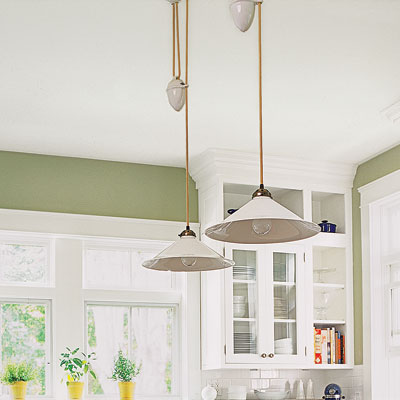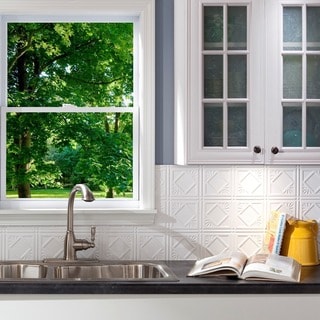Suppose a person is thinking about using their property equity to cover the cost of their project, finance unexpected costs, or consolidate debts. In that case, HELOCs or Home Equity Line of Credit is an excellent way to do it. Individuals will only have to pay what they spend on their HELOC, similar to credit cards (CC), but they need to make sure they know all of the advantages and disadvantages before signing the contract – or so to speak.
If borrowers decide a Home Equity Line of Credit is the best way to go, then the next thing they need to do is to lock in the best available rate. There are some strategies individuals can use to ensure they are getting the best possible deal.
What are HELOCs?
This thing is a revolving line of credit secured by the borrower’s property. It is similar to CCs: Individuals will be able to spend funds using their LOC however they want and then have a set of time to pay whatever they spend. A HELOC usually works on thirty-year models, with a ten-year draw period and a twenty-year repayment term.
Visit this site for more details about how to get this kind of debenture.
How are rates on these loans set?
Like housing loan rates and even high-yielding savings account rates, Home Equity Line of Credit rates goes up and down with the prime rate, which conventional banks set and aggregated by the country’s Federal Reserve for daily rate reports. Lending firms have their own standards that help determine how much more than prime rates they want their rates to be.
Some financial institutions may assign larger margins (higher costs for borrowers), while others choose smaller margins (lower costs for the borrower). It is very important to remember that the costs of these things are variable, so even if an individual opens their HELOC at a specific IR, the interest they actually owe will differ over time. If these things go up, they will owe more IR on their HELOCs.
What is a good HELOC IR?
It will depend on the amount of value in the person’s home, their creditworthiness, as well as what housing market they are in. But generally speaking, the most attractive percentage people can get is going at the lower end of what lending firms are currently offering. In today’s world, that is around three to four percent.
Home Equity Loan Versus Home Equity Line of Credit rates
HEL rates also fluctuate with prime rates, but these things have fixed IRs. It means whatever percentage people lock in when they get their HEL is the percentage they will pay for the entirety of their debenture term. HEL percentages are a bit higher compared to those for HELOCs. As of the moment, the low-end of what most financial institutions offer is around three to four percent.
How to get the best Home Equity Line of Credit percentage?
Look outside of the box when it comes to the lending firms
An excellent place to start the search is at banks with which individuals already have a good and existing relationship. But people should not stop there. Compare percentages at local lending firms, credit unions (which can offer some of the best percentages), online lenders, or conventional banks.
A lot of these percentages are location-dependent, and individuals may need to enter personal details about their personal and home circumstances before getting estimates. Also, estimates people get can change after formal checks and other processes are adequately done to determine their debenture eligibility.
A Simple Tip: Local financial institutions such as unions offer reasonable and competitive percentages on HELOCs.
Click https://www.bdc.ca/en/articles-tools/entrepreneur-toolkit/templates-business-guides/glossary/loan-to-value-ratio for details about the LTV ratio.
How much property equity do people have?
It is best for individuals to have more equity in their homes. The amount of equity helps determine what percentage individuals can get for their HELOCs and how much their line of credit will be. The COVID-19 pandemic has caused requirements to be more stringent. Individuals are going to need more property value that they would not have needed before the COVID-19 pandemic. The reason for this is to mitigate risks from a lending firm’s perspective. If individuals retain more equity stakes, it will cushion any loss that financial institutions may face in case of defaults.
The more value individuals have in their house, the lower their combined LTV or Loan-to-Value ratio will be. The LTV ratio is used to measure the relationship between the market value of the house and the loan amount – it is best to have a lower LTV ratio.
People should consider their credits
There are factors that go into finding out what HELOC percentage people qualify for. Apart from how much value people have, one of the biggest factors is their history and score. Financial institutions like conventional banks, credit unions, or lending firms want to see their positive payment history on past debts and loans. Individuals should check their reports and scores to ensure all their personal details are correct and there are no errors. If their credit is not pristine, people need to consider ways to build their credit before they apply.
Borrowers should think about shorter time frames
Most of these debentures work on standard thirty-year models, with ten-year draw periods during which people can use their LOCs up to the amount of their line, and then twenty-year payment periods where individuals pay everything they spend with interest.
But if financial institutions allow it, shorter repayment or draw periods may result in lower interest rates. But borrowers should always remember that it means they will have a shorter time to take advantage of the Home Equity Line of Credit or to pay off their debts.
Look for good discounts
A lot of lending firms offer discounted introductory rates on HELOCs like the laveste rente at vafo (the lowest interest rate at vafo), but take note that these loans are long-term commitments (usually thirty years). Six-month discounts on rates will not make much of an impact if individuals use their debentures for the entire draw period. Hence, people need to make sure they know what percentage they will get after the introductory period ends and if they can afford these things.
Lock in fixed-rate HELOCs
These things are traditionally variable-rate goods, but it is possible to lock in fixed-rate HELOCs on remaining balances. In cases where IRs are rising, a fixed-rate line of credits can save individuals from paying more as IRs rise. There is often a charge to lock in that IR, so people should ensure that they take into consideration everything before signing the contract. But if figures are really spiking, fixed-rate lock-ins can save borrowers a lot of money in the long run.
In conclusion
There are a couple of ways that borrowers can boost their odds of getting an excellent Home Equity Line of Credit interest rates. Still, the most vital things are going to be the amount of property equity people have, as well as their rating and history.
Remember that most of these things have variable rates; that is why whatever figures borrowers get will be subjected to fluctuations depending on the market. People need to make sure they conduct some investigation or research before signing the contract. These debentures will provide funds for their major purchases or projects. This thing can make or break a person’s financial standing.





































